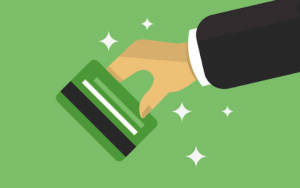Have you ever wondered why the price of your date night always costs more than you were expecting? Why do the prices on the menu not add up to the total on the receipt? How come your new suit or dress always costs more at the register than it does on the price tag? These are all important questions that can be answered with just two words… Sales Tax.
What is Sales Tax?
Sales tax is commonly referred to as a tax put on goods or services by a governing body in order to fund various public expenditures. Sales tax is commonly attached to tangible personal property such as common retail items like furniture, beauty products, paper goods, and much more. The amount of sales tax you pay for a particular item depends on where you are located. For example, in Austin, Texas sales tax is 8.25% however, in Miami, Florida sales tax is 7%. To find out what your state and local government sales tax is go to the Tax Foundation website.
It is important to note that not all states have sales tax. Alaska, Delaware, Montana, New Hampshire, and Oregon are the only five states in the U.S. that do not have a sales tax.
How to Calculate Sales Tax
To calculate sales tax use this formula: Total item price x 1 + sales tax rate = total sales tax
For example, let’s say you are buying an item priced at $10.00 and the sales tax rate is 7%. The $10 total item price x 1.07 = $10.70
As you can imagine, the final cost of your bill can increase dramatically if you are buying a large quantity of items. That is why it is always very important to make sure that the money you have not only covers what is on the price tag but what is on the receipt after sales tax has been included. One of the most embarrassing things you can do as a consumer is forget to take into consideration the additional cost of sales tax. If this happens you may not have enough money to afford everything in your shopping cart or on your restaurant bill. That is why taking sales tax into consideration is extremely important for anybody wanting to make smart financial decisions and ultimately be a savvy consumer.

What are Tax Holidays?
A tax holiday is a temporary time period in which tax is either dramatically reduced or eliminated. Oftentimes tax holidays are the best times to shop or clothing or school supplies because sales tax is no longer added to the total cost of these products. Tax holidays are usually put in place by state or local governments to give consumers and businesses a temporary tax relief. For example, the state of Texas has implemented a tax free holiday. In 2020 this tax free time period is between August 7th through 9th. During this holiday most clothing, footwear, school supplies and backpacks (sold for less than $100) are tax free. To find out if your state or local government offers a tax free holiday go to the Sales Tax Institute.


















Recent Comments